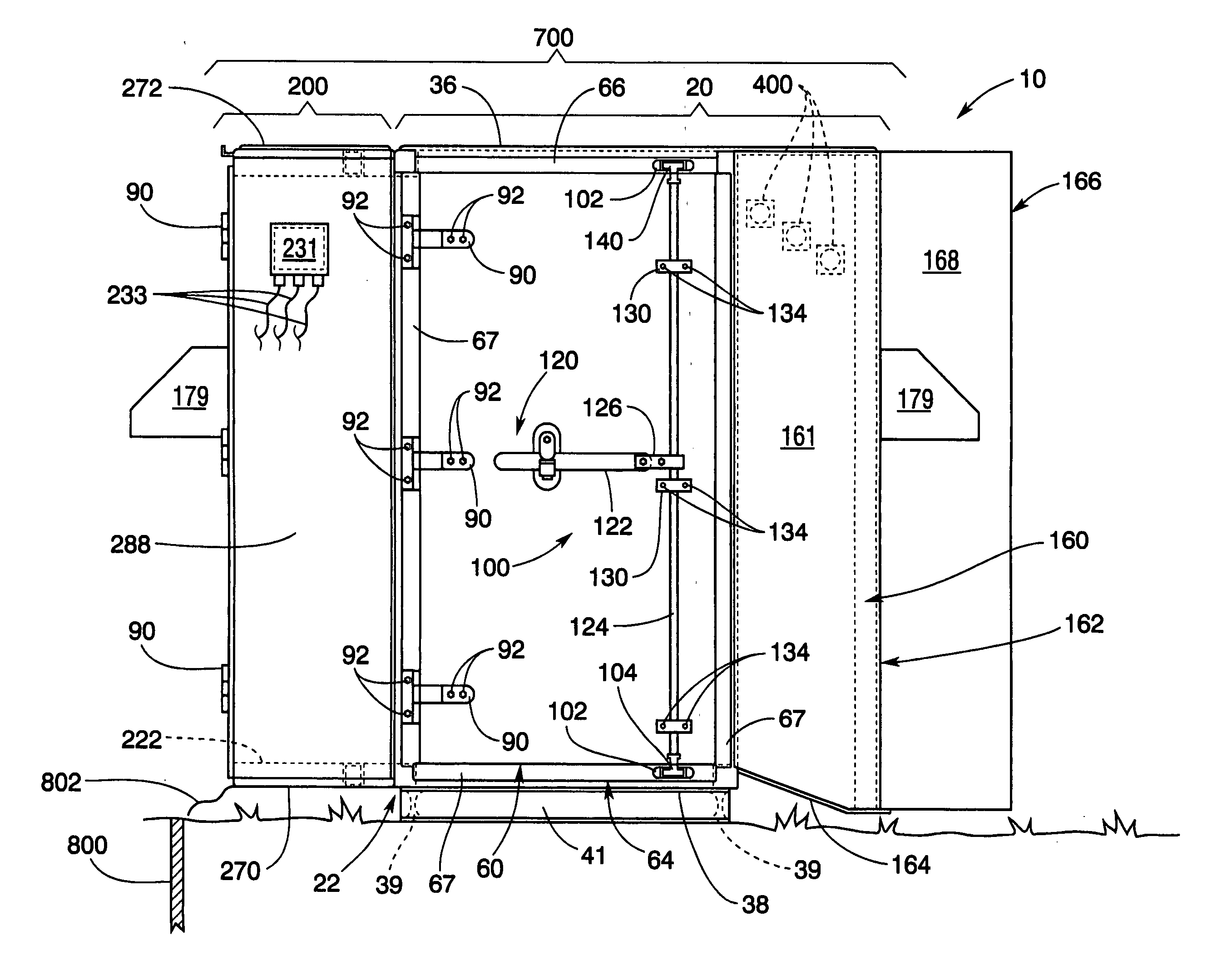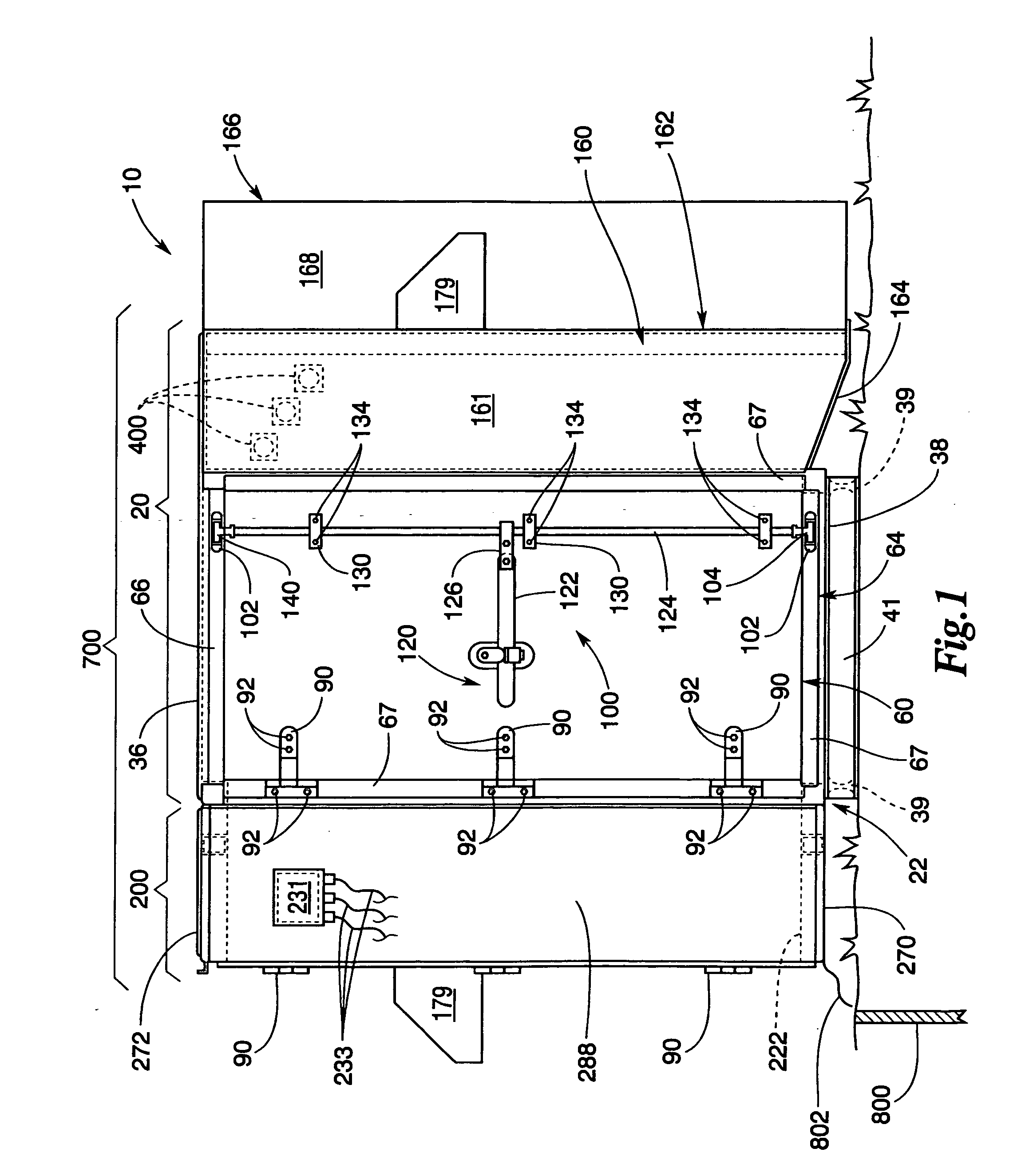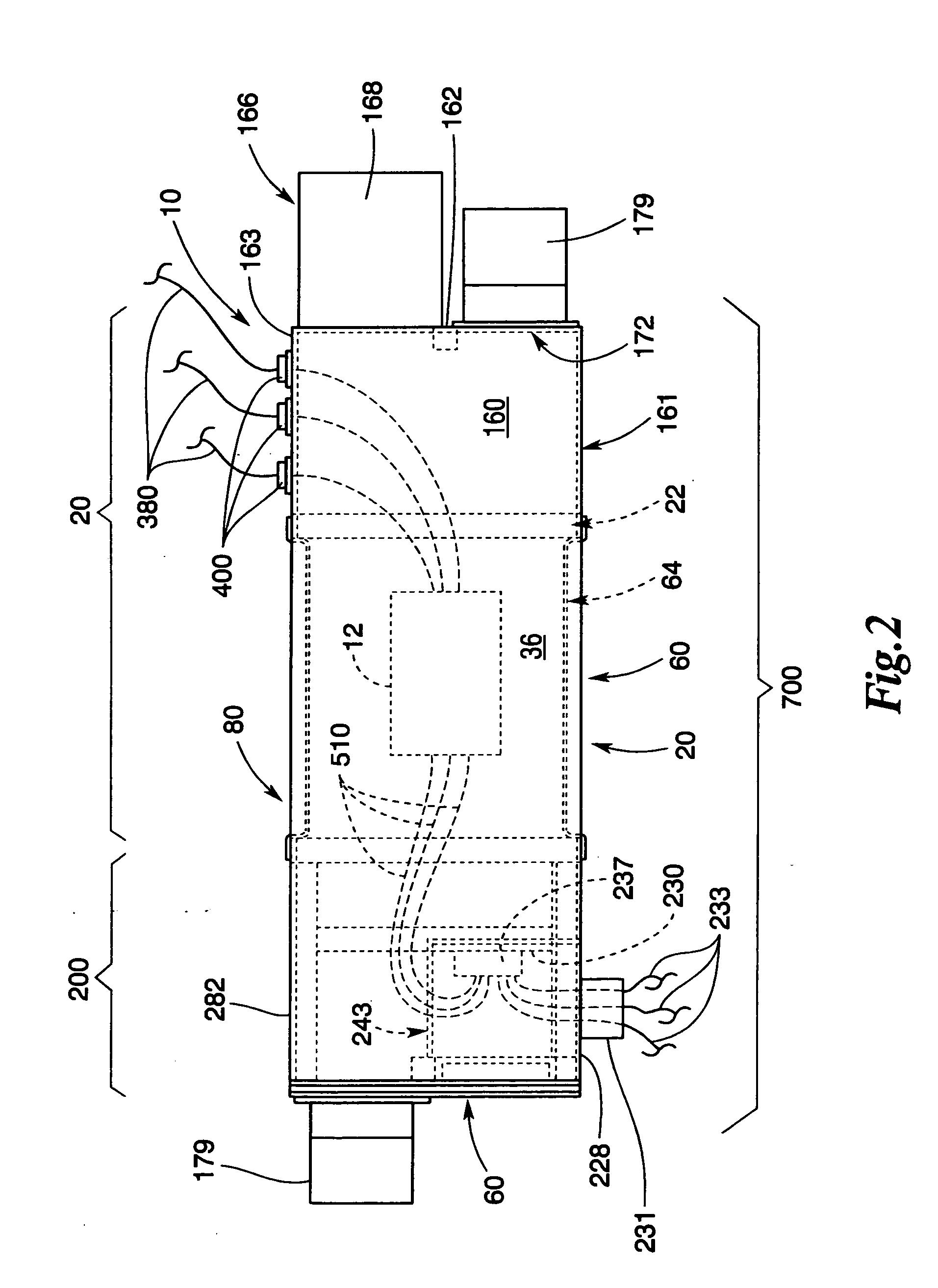Shielded cable entry ports and assemblies
a technology of enclosures and entry ports, applied in the direction of electrical apparatus casings/cabinets/drawers, screening rooms/chambers, racks/frame construction, etc., can solve the problems of man still struggling to harness and control the power of his body, damage or destruction of components, permanent damage to components, etc., and achieve the effect of reducing the amount of interferen
- Summary
- Abstract
- Description
- Claims
- Application Information
AI Technical Summary
Benefits of technology
Problems solved by technology
Method used
Image
Examples
Embodiment Construction
[0083] Referring now to the drawings for the purposes of illustrating embodiments of the invention only and not for purposes of limiting the same, FIGS. 1 and 2 show one embodiment of a building enclosure generally designated as 10 that is adapted to house various types of electrical and other equipment 12 therein. Such equipment could comprise, for example, computers, transmitters, electronic meters, recorders, receivers, cellular telephone equipment, junction boxes, etc. While this embodiment may be well adapted for housing electrical equipment located at remote locations such as natural gas wells, the skilled artisan will readily appreciate that the novel features of this embodiment can be employed to protect / shield a variety of different electrical components regardless of their location and application. Thus, the scope of protection afforded to the subject invention should not be limited to enclosures for protecting / housing electrical equipment located at natural gas wells and ...
PUM
 Login to View More
Login to View More Abstract
Description
Claims
Application Information
 Login to View More
Login to View More - R&D
- Intellectual Property
- Life Sciences
- Materials
- Tech Scout
- Unparalleled Data Quality
- Higher Quality Content
- 60% Fewer Hallucinations
Browse by: Latest US Patents, China's latest patents, Technical Efficacy Thesaurus, Application Domain, Technology Topic, Popular Technical Reports.
© 2025 PatSnap. All rights reserved.Legal|Privacy policy|Modern Slavery Act Transparency Statement|Sitemap|About US| Contact US: help@patsnap.com



